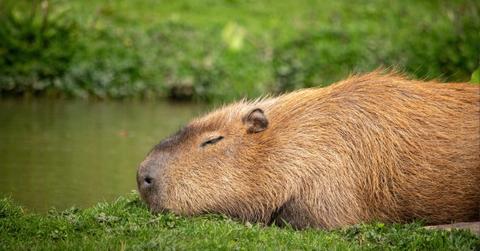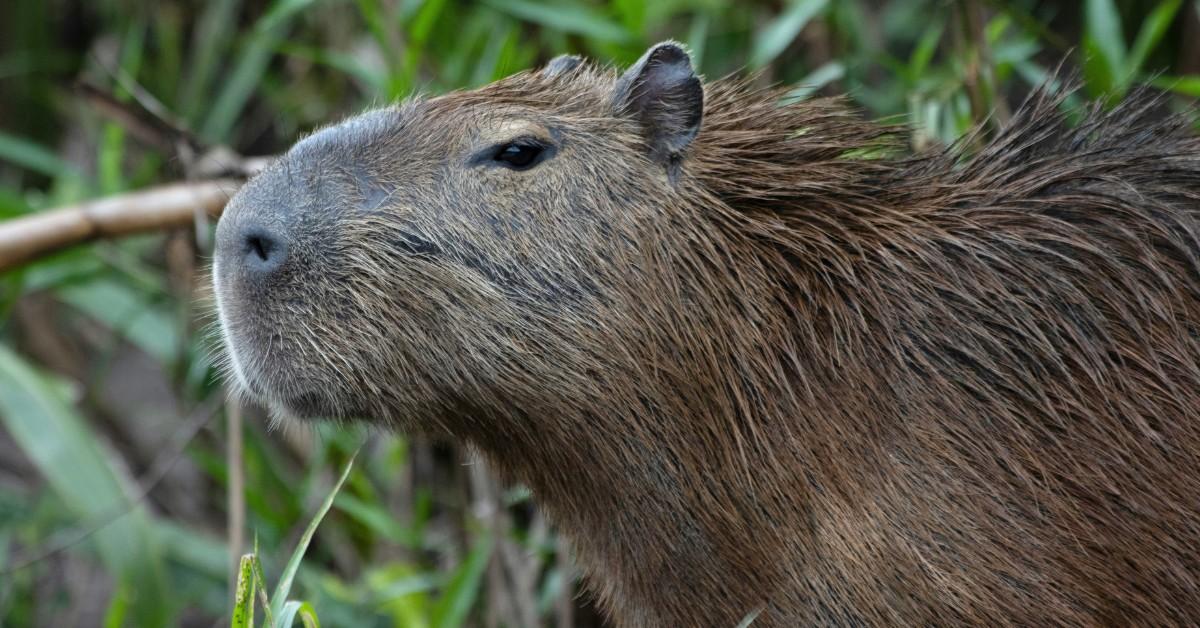All of England Is Looking for Cinnamon the Capybara, After She Escaped the Zoo
Cinnamon is said to be about the same size as a Labrador.
Published Sept. 19 2024, 2:56 p.m. ET

A capybara named Cinnamon went on the lam in a Telford, Shropshire, England on Sept. 13, 2024, prompting a massive manhunt from humans and drones alike. The creature slipped out of her home at the Hoo Zoo and Dinosaur World, giving zookeepers quite a fright.
It sounds like Cinnamon snuck out when she saw an opportunity to escape, and she was initially spotted in the nearby thickets of the undeveloped land next to the zoo.
Continue reading to learn more about Cinnamon the capybara, including why her diet may make getting her back home a little tougher than zoo officials had hoped.

Cinnamon the capybara snuck out of her enclosure while a new tractor was being delivered.
In what seems like a case of being in the right place at the right time, Cinnamon simply walked out of the zoo while the gates were opened to bring a new piece of machinery in, according to The Guardian.
It sounds like Cinnamon saw the opening, and scurried her way into some ground cover just outside of the property, disappearing from sight before anyone realized what had happened.
After making her big break, The BBC says Cinnamon was spotted living it up just outside the zoo's walls on property that buts up against land owned by the Ministry of Defense. Thanks to some overly thick growth in the area, Cinnamon became really hard to locate, according to a social media post the zoo shared about her disappearance.
“At present she is comfortable, content, not short on food and not at risk to predators so it's better that we take our time and recapture Cinnamon with the least amount of stress possible,” the zoo shared to Instagram on Sept. 19, six days after she escaped.
As such, searchers were forced to get extra creative with their efforts, turning to some unusual tactics to entice Cinnamon back to the zoo where she was born, including live traps, playing the familiar sounds of other capybaras, and laying out mouth-watering foods like pears and apples that she wouldn't otherwise be able to forage for herself in the land surrounding the zoo.
Officials also relied on thermal drones in their efforts to track Cinnamon, noting that during her initial first few days of freedom she appeared to stay relatively close, not traveling more than 650 feet away from the exterior walls of the zoo, making her easy to spot.
Even so, efforts to reconnect with Cinnamon were temporarily paused on Sept. 19, over fears that attempts to capture the capybara could actually put her in danger. Officials worried that these attempts could push her onto the Ministry of Defense's property, where zookeepers would be unlikely to retrieve her.
Capybaras are good foragers, so Cinnamon will have plenty of access to food and water while she's free.
It's in Cinnamon's natural ability to thrive in an spot such as the one that she landed herself in that is makes the search efforts so hard. One zoo official told The Guardian that the area Cinnamon escaped to has everything she could ever need, including food, water, and shelter.
There's even the perfect place for her to hide if she encounters a predator, since there are ponds on the land, which is exactly where officials say Cinnamon will head if she were to feel threatened, since capybaras are naturally good swimmers who can stay underwater for five minutes at a time.
This isn't the first time the Hoo Zoo is making headlines because of their animals.
In 2017, the Daily Mail published the findings of the Royal Society for the Prevention of Cruelty to Animals (RSPCA), which noted 11 different complaints about the zoo.
These included claims that they had isolated a macaw and had kept a wallaby and her baby in unacceptable quarters, reminding us once again that zoos are very rarely equipped to meet the needs and safety standards of the wild animals within their care.